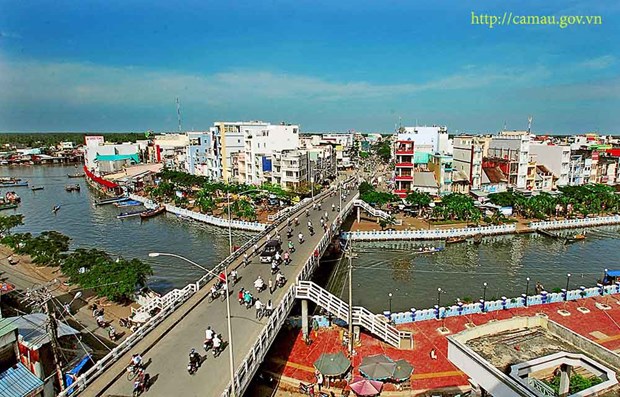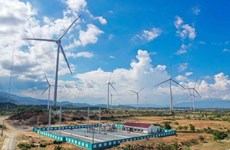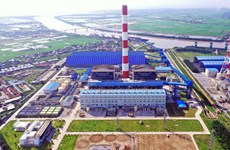Ca Mau City sets out to become urban hub of southernmost region
Ca Mau City in the southernmost province of Ca Mau have embarked on making a master plan for urban development through 2025 with the goal of becoming a nuclear urban area in the southernmost region.
 One corner of Ca Mau city. (Photo: camau.gov.vn)
One corner of Ca Mau city. (Photo: camau.gov.vn)Ca Mau City in the southernmost province of Ca Mau have embarked on making a master plan for urban development through 2025 with the goal of becoming a nuclear urban area in the southernmost region.
As part of the process, the city authorities have designed 54 blueprints for over 19,790 hectares of land, including 7 on new rural areas and 43 detailed construction plans.
An amount of 23.6 trillion VND (1.1 billion USD) has been splashed out on key projects in the locality. Numerous economic, cultural and social facilities have been put into operation, which helps raise local living standards.
The city’s economy is growing at an average speed of 12.33 percent, which is higher than the target and the provincial average growth. Income per capita in 2015 reached 76.8 million USD (3,572 USD), doubling that of 2010. Meanwhile, impoverished household rate tapered off to 1.04 percent from 2.56 percent five years ago.
Secretary of the provincial Party Committee Duong Thanh Binh reiterated the role of Ca Mau City as the province’s political, economic and socio-cultural centre at the recent congress of the city’s party organisation.
He urged the city to build a synchronous and modern infrastructure towards meeting the standards for Class-1 cities by 2020.
According to Secretary of the municipal Party Committee Ho Trung Viet, the city will continue to improve quality of urban designs and adjust the municipal planning by 2030 with visions to 2050.
He added that the province will prioritise planning in the fields of socio-economic development, transport network and public facilities adaptive to climate change and sea-level rise.
The city of Ca Mau, with a population of almost 300,000 people, is one of the largest cities in the Mekong Delta region. The city is also among the country’s most vulnerable to climate change and rises in sea level.
Since August 2010, the city has been a Class-2 city, of which the population must be at least 250,000 and non-agricultural labourers make up no less than 80 percent of the workforce.
Criteria for a Class 1 city require it to function as a socio-economic, political, cultural, technological and tourism hotspot while promoting socio-economic development throughout the region. Non-agricultural employment should incorporate 85 percent of the total provincial workforce. City infrastructure should be developed and population size should be at least 500,000. Average population density should be no more than 12,000 people per square kilometre.-VNA











